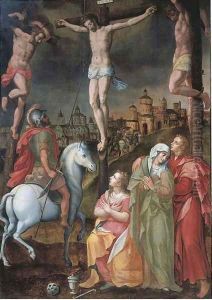Antonius Claeissens Paintings
Antonius Claeissens, also known as Anthonie Claeissins or Claeissens the Elder, was a Flemish painter born in 1536 in Bruges, a city then part of the Spanish Netherlands. He was a prominent figure in the late Renaissance period, known for his detailed and imaginative works that often interwove elements of the Flemish tradition with the Italian Renaissance's influence. His father, Pieter Claeyssens the Elder, was also a painter, suggesting that Antonius was born into an environment rich in artistic tradition and likely received his initial training within his family's workshop.
Throughout his career, Antonius became renowned for his religious compositions, allegorical scenes, and portraits, showcasing a mastery in handling both the grandeur of large-scale works and the intimacy of smaller pieces. His art is characterized by a meticulous attention to detail, vibrant colors, and a distinctive use of light and shadow, all of which contributed to the dynamic compositions that were highly sought after by the church, the nobility, and the emerging middle class in Bruges.
Claeissens' work was deeply influenced by the Italian Renaissance, a result of the cultural exchange between the Low Countries and Italy during the 16th century. This influence is evident in his adoption of perspective, anatomical accuracy, and a more naturalistic approach to figures and landscapes. However, he also remained true to his Flemish roots, incorporating intricate details and rich textures that celebrated the material world, a hallmark of Northern Renaissance art.
Despite his success, Antonius Claeissens' legacy was somewhat overshadowed by the rise of the Baroque style and the emergence of artists like Peter Paul Rubens. However, his contributions to the Flemish Renaissance and his role in the cultural life of Bruges during the 16th century remain significant. Antonius Claeissens passed away in 1613, leaving behind a body of work that continues to be appreciated for its beauty, technical skill, and historical value in the study of Renaissance art in the Low Countries.
